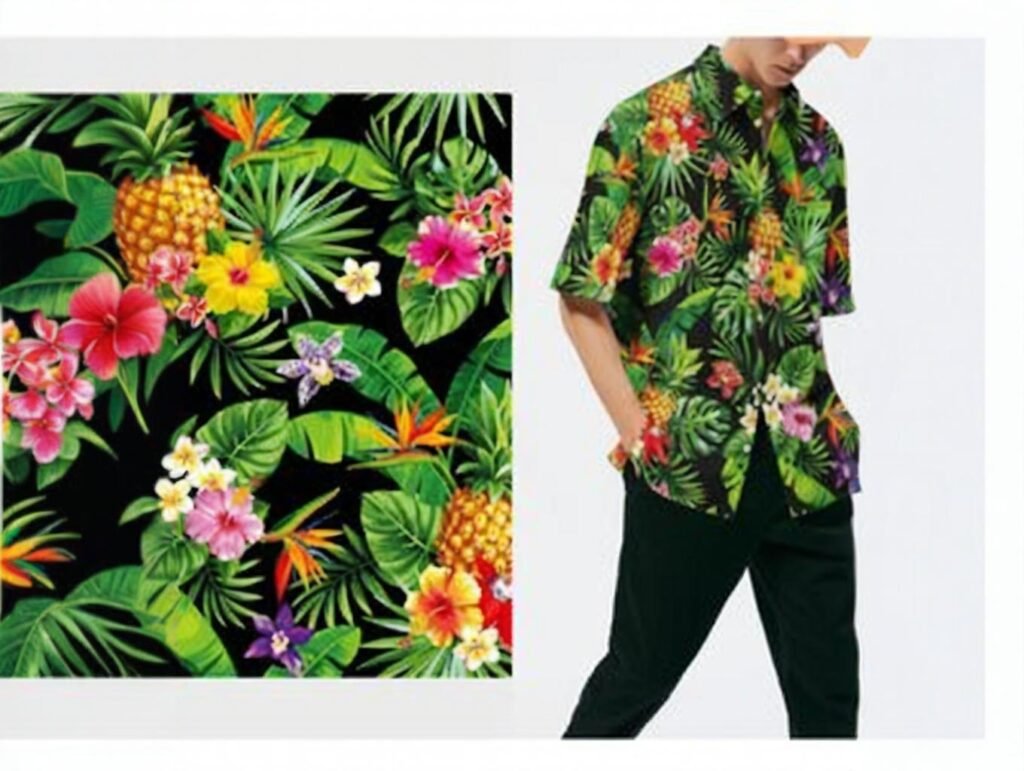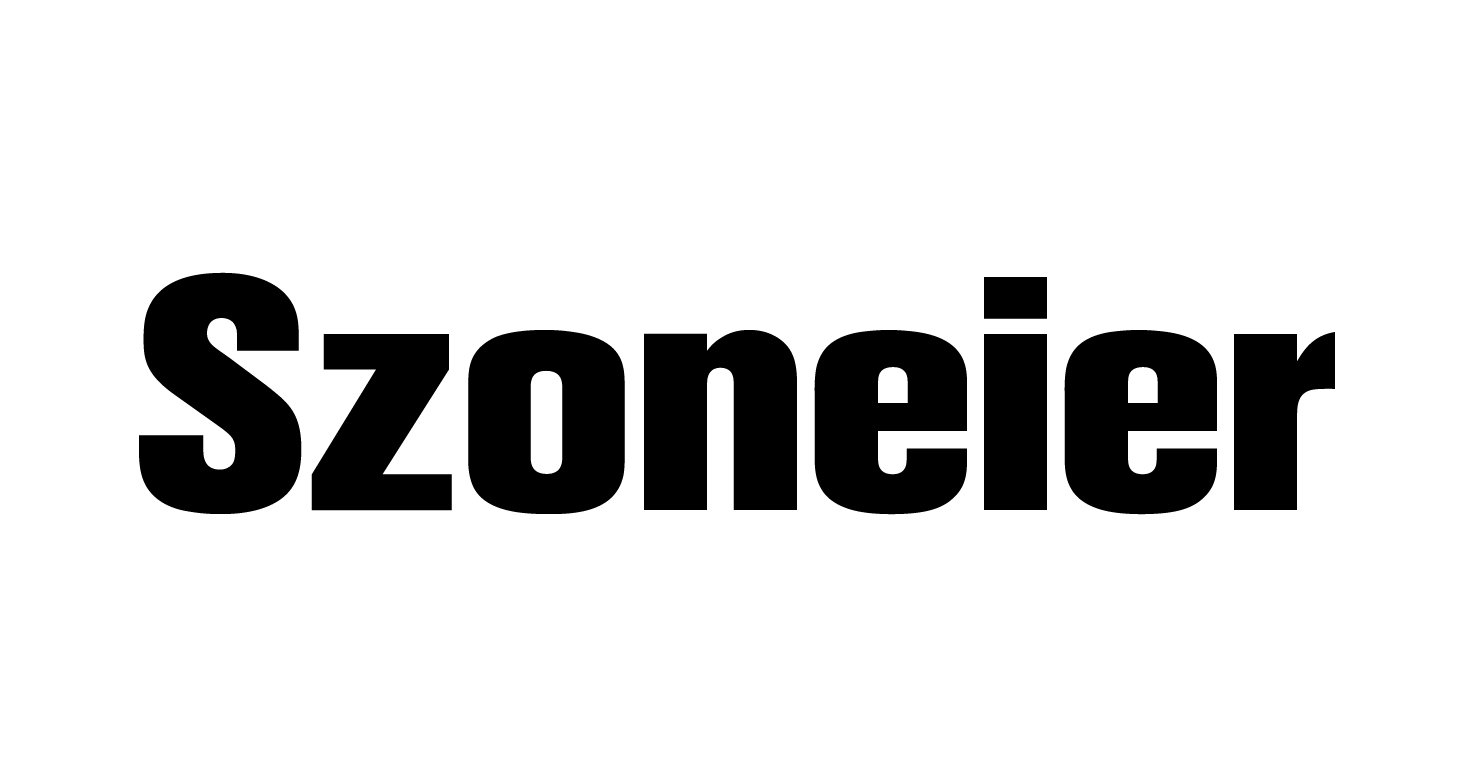When it comes to printed fabric products—from promotional t-shirts to high-end fashion apparel—print clarity can make or break a design. Two of the most common choices for printing are polyester and cotton, and while both fabrics have loyal followings, the difference in print quality between them is often misunderstood.
Polyester generally delivers sharper, more vibrant designs when using sublimation or heat transfer methods, while cotton provides a softer, more natural feel but can produce slightly fuzzier lines depending on the printing technique. The best choice depends on your desired aesthetic, ink technology, and intended fabric usage.
This guide doesn’t just scratch the surface—we dive into how weave density, ink absorption, surface texture, and even post-treatment affect final outcomes. Whether you’re printing intricate logos or photorealistic art, understanding how each fabric behaves under the press is crucial to achieving professional-grade results.
Let’s kick things off with a story: a startup streetwear brand wanted bold, sharp graphics on black hoodies. They used DTG (Direct-to-Garment) printing on 100% cotton. While the garments felt premium, the prints dulled after a few washes. After switching to polyester with sublimation, the colors popped and stayed vibrant longer. But was it worth the trade-off in softness?
Read on to understand the science, strategy, and real-world performance behind these two powerhouse fabrics.
What Are the Key Differences Between Polyester and Cotton for Fabric Printing?

Polyester and cotton differ significantly in surface texture, absorbency, heat tolerance, and fiber structure—all of which impact print sharpness and ink bonding.
Polyester offers a smooth, non-absorbent surface ideal for heat-based printing methods like sublimation, resulting in sharp, edge-defined designs. Cotton, while highly absorbent and better suited for water-based inks, can lead to slight bleeding and softer edges, especially in high-resolution printing.
Understanding Fabric Fundamentals
Surface Texture and Fiber Composition
| Fabric | Fiber Type | Surface Texture | Ink Behavior |
|---|---|---|---|
| Cotton | Natural cellulose | Soft, porous | Ink soaks in, slightly spreads |
| Polyester | Synthetic polymer | Smooth, non-porous | Ink sits on top, bonds with heat |
Cotton’s natural porosity means that inks absorb into the fibers, making colors look slightly muted or softened around the edges. Polyester, on the other hand, doesn’t absorb ink but allows it to fuse onto the surface via heat, producing bolder lines and vibrant hues.
Print Clarity in Real Use
A U.S.-based tote bag manufacturer tested both fabrics using water-based screen printing. Their lab results showed:
- Polyester prints retained 92% edge clarity after five washes
- Cotton prints retained 81% edge clarity, with slight feathering
Shrinkage and Print Alignment
Cotton may shrink post-print, especially when not pre-treated or pre-washed, leading to misalignment. Polyester, being heat-set during production, is more dimensionally stable—especially important for multi-color or precision-aligned graphics.
Environmental Conditions
Humidity affects cotton more during printing due to its moisture absorption. Polyester, being hydrophobic, maintains consistency across print batches in various climates.
Which Fabric Holds Color Better in Digital, Screen, and Sublimation Printing?
Polyester holds color better in sublimation and heat transfer printing, offering vivid saturation and long-term fade resistance. Cotton excels in direct-to-garment (DTG) and screen printing, providing rich but softer tones that may fade slightly over time.
Matching Printing Methods to Fabric Behavior
Printing Method Breakdown
| Method | Best for Cotton | Best for Polyester | Print Longevity | Color Vibrancy |
|---|---|---|---|---|
| Sublimation | ✘ | ✔✔✔ | Excellent | Very High |
| DTG (Water-Based) | ✔✔✔ | ✘ | Moderate | Medium |
| Plastisol Screen | ✔✔ | ✔ (with additives) | High | High |
| Heat Transfer Vinyl | ✔ | ✔✔ | High | High |
Sublimation & Polyester: A Perfect Match
Sublimation printing works by turning ink into gas and bonding it to the polyester fibers at high temperature. Because this process dyes the fabric itself rather than sitting on top, the result is a vibrant, permanent print that won’t crack, peel, or fade easily.
Why Cotton Fades More
Cotton’s absorbency makes it ideal for soaking up pigment inks, but those same inks are vulnerable to fading, especially without proper pretreatment or curing. Over time and after many washes, cotton prints can lose contrast—especially in dark tones or fine lines.
Ink Fastness Comparison Table
| Fabric | Ink Type | Fastness (Wash Cycles) | Fading (After 20 Washes) |
|---|---|---|---|
| Cotton | DTG Pigment | Medium (15–30) | Noticeable (20–30%) |
| Polyester | Sublimation Ink | Very High (50+) | Minimal (<5%) |
| Cotton | Plastisol Ink | High (40–50) | Low (10–15%) |
Real-World Insight
In a 2023 test by Textile World, a line of sublimated polyester jerseys showed less than 3% color degradation after 50 industrial washes, while the same design screen-printed on cotton faded by 22% under identical conditions.
UV Exposure and Outdoor Use
Polyester also performs better under sunlight. It resists UV degradation better than cotton, making it ideal for flags, banners, and sportswear exposed to the elements.
How Does the Print Sharpness Compare Between Polyester and Cotton?

Polyester typically delivers sharper, more defined print edges than cotton, especially in sublimation and heat transfer methods, where the ink bonds at a molecular level. Cotton prints, particularly with DTG and water-based screen printing, tend to have a softer appearance due to ink absorption and fiber texture.
What Sharpness Really Means in Fabric Printing
Edge Definition and Line Clarity
Sharpness in printed design depends on how well the ink maintains clean edges without feathering or bleeding. Polyester, especially in filament-based weaves, presents a tight, smooth surface that doesn’t absorb ink. This prevents ink spread, resulting in crisp, photo-like definition.
Cotton’s Limitations in Sharpness
Cotton, composed of short, fluffy cellulose fibers, tends to allow inks to bleed slightly. On light backgrounds, this may not be noticeable, but on dark cotton with DTG printing, black outlines or small text often appear fuzzier.
Sharpness Comparison Table (Using 8pt Font at 300 DPI)
| Fabric Type | Printing Method | Print Sharpness Score (1–10) | Notable Notes |
|---|---|---|---|
| Polyester | Sublimation | 9.5 | Excellent detail retention |
| Cotton | DTG | 6.5 | Minor feathering around fine text |
| Cotton | Plastisol Screen | 8.0 | Good sharpness, but thicker ink layer |
| Polyester | HTV | 8.5 | Very clean edges, slightly raised surface |
Microscope Test Case (Real Example) In a comparative lab test by Printwear Pro, a high-resolution QR code was printed on both fabrics. The polyester print (sublimated) retained scannable accuracy even after five washes, while the cotton version (DTG) became unreadable after two washes due to edge bleeding and ink absorption.
Humanized Perspective
A custom t-shirt startup in Indonesia reported that polyester allowed their fine-line tattoo-style designs to stand out clearly, reducing reprint rates by 18% compared to their cotton line. Customers praised the crisper visual quality, especially in detailed graphics.
What Printing Methods Work Best for Polyester vs Cotton Fabrics?
Sublimation and heat transfer printing are ideal for polyester, while direct-to-garment (DTG), screen printing, and discharge printing work better on cotton. Each method has specific fabric compatibility, cost, and visual results.
Printing Methods by Fabric Type
Best Printing Methods for Polyester
- Sublimation Printing
- Works only on polyester or poly-blends (min. 65%)
- Produces permanent, high-resolution, and vibrant prints
- Ideal for all-over or seam-to-seam printing (sportswear, jerseys)
- Heat Transfer (HTV or DTF)
- Bonds ink or vinyl film onto polyester surface
- Suitable for logos, small runs, custom names/numbers
- Sharp and opaque on both light and dark fabrics
Best Printing Methods for Cotton
- Direct-to-Garment (DTG)
- Water-based inkjet printing ideal for high-detail images
- Requires pretreatment and white ink for dark fabrics
- Best for 100% cotton or high-cotton blends
- Plastisol Screen Printing
- Uses thick plastisol ink, sits on fabric surface
- High durability and opacity
- Good for bulk orders, especially flat vector designs
- Discharge Printing
- Chemical process that removes dye from dark cotton
- Creates soft, natural-feel prints
- Works best on 100% combed cotton
Fabric-Method Compatibility Matrix
| Printing Method | 100% Cotton | Cotton Blend | 100% Polyester | Poly Blend (65/35) |
|---|---|---|---|---|
| Sublimation | ✘ | ✘ | ✔✔✔ | ✔✔ |
| DTG | ✔✔✔ | ✔ | ✘ | ✘ |
| Screen Printing | ✔✔✔ | ✔✔ | ✔ (w/ additive) | ✔✔ |
| Heat Transfer (HTV) | ✔✔ | ✔✔ | ✔✔ | ✔✔✔ |
| Discharge Printing | ✔✔✔ | ✘ | ✘ | ✘ |
Cost and Efficiency Considerations
- Sublimation: Best suited for white or light-colored polyester. High setup cost, low per-unit cost for large runs.
- DTG: High-resolution but slower. Ideal for custom orders, small runs, or photorealistic prints.
- Screen Printing: Low cost per unit at scale. Best for logos and flat colors, but less sharp in gradients.
- HTV: Flexible for personalization but labor-intensive for bulk jobs.
Case Example: Festival Merch Supplier in Germany
A supplier of event merchandise switched from DTG on cotton to sublimation on polyester for their tour shirts. The change:
- Reduced per-unit cost by 22%
- Increased print vibrancy score from 6.8 to 9.1
- Enabled full-bleed, edge-to-edge prints, boosting perceived product value
Do Inks Perform Differently on Cotton Compared to Polyester?

Yes, inks perform very differently on cotton and polyester due to the chemical structure and absorbency of each fabric. Cotton absorbs water-based inks well, making it compatible with pigment or reactive dyes, while polyester requires heat-activated inks like disperse or sublimation inks to bond effectively to its synthetic fibers.
Ink Chemistry Meets Fabric Behavior
Understanding Ink-Fiber Interaction
| Fabric | Ink Type | Bonding Mechanism | Print Feel |
|---|---|---|---|
| Cotton | Pigment Ink | Sits in fibers with binder | Soft, natural |
| Cotton | Reactive Dye | Chemically reacts with cellulose | Deep color |
| Polyester | Disperse/Sublimation | Heat-activated diffusion into polymer | Embedded, smooth |
| Polyester | Plastisol | Cured on surface with additives | Raised, rubbery |
Moisture Absorption and Ink Flow
Cotton’s porous structure makes it ideal for absorbing inks deeply, but that same feature can cause edge bleeding if the ink flow isn’t carefully controlled. This is why pigment inks can fade or blur over time unless fixed properly.
Polyester’s smooth surface repels most water-based inks unless chemically or thermally bonded. Sublimation inks turn into gas and chemically embed within polyester’s molecular structure, creating a vibrant and wash-proof finish.
Drying and Curing Behavior
- Cotton with DTG: Needs pre-treatment and post-curing at around 160°C
- Polyester with Sublimation: Requires 180–200°C under pressure (heat press)
- Ink Flash Point Consideration: Polyester is heat-sensitive; overheating can cause “scorch marks” or yellowing
Ink Longevity Comparison
| Fabric + Ink Combo | Wash Durability (50 washes) | Color Retention Score (1–10) |
|---|---|---|
| Cotton + DTG (Pigment) | Moderate (~30 cycles) | 6.5 |
| Polyester + Sublimation | Excellent (>50 cycles) | 9.8 |
| Cotton + Plastisol | High (~45–50 cycles) | 8.5 |
| Polyester + HTV | High (~50 cycles) | 8.8 |
Real-World Insight: Art Print Merchandising
A Canadian art print-on-demand business switched from DTG cotton shirts to sublimated polyester. Their customer feedback highlighted:
- Brighter colors
- Improved print detail
- 90% drop in complaints about fading after the 5th wash
Environmental Considerations
- DTG inks (water-based) are more eco-friendly than plastisol, but still require large water usage
- Sublimation inks are less water-intensive but rely on synthetic fabrics, raising biodegradability concerns
- rPET (recycled polyester) offers a sustainable path forward for sublimation without virgin plastic use
Is Polyester or Cotton More Durable After Multiple Washes and Prints?
Polyester is generally more durable than cotton when it comes to print retention, fabric integrity, and resistance to wear after multiple washes. Cotton is prone to shrinkage, fading, and fabric softening over time, while polyester holds its shape, color, and structure better, especially when printed using sublimation.
Washing Performance, Print Retention, and Longevity
Shrinkage and Fabric Stability
| Fabric | Shrinkage After 5 Washes | Notes |
|---|---|---|
| Cotton | 3–7% | Requires pre-shrinking or special care |
| Polyester | <1% | Dimensionally stable |
Pilling, Fraying, and Surface Wear
- Cotton may develop fuzziness or pilling in high-friction areas (e.g., underarms)
- Polyester fibers are smoother and more resistant to abrasion
Color and Print Longevity Tests
A textile durability study by Intertek Labs tested cotton vs polyester over 50 wash/dry cycles. Key findings included:
| Metric | Cotton (DTG) | Polyester (Sublimation) |
|---|---|---|
| Color Fade | High (35% fade) | Minimal (under 5%) |
| Print Cracking/Peeling | Moderate | None |
| Fabric Stretch Retention | Low–Medium | High |
| Pilling Score (1–5) | 2.8 | 4.7 |
Case Example: Branded Uniforms
A restaurant chain in Southeast Asia moved from cotton screen-printed aprons to sublimated polyester. Benefits:
- After 12 months, polyester aprons still retained brand logos clearly
- Cotton versions previously needed replacement every 3–4 months
- Result: 32% lower annual uniform cost
User-Centered Consideration
That said, comfort and texture also matter. While polyester wins on durability and print clarity, cotton remains preferred for luxury feel or vintage aesthetics. Many brands now use cotton-poly blends to balance softness and longevity.
How Does Fabric Weave and GSM Affect Print Quality?

Fabric weave and GSM (grams per square meter) significantly impact print clarity, ink absorption, and overall design visibility. A tighter weave and higher GSM usually provide a smoother print surface, minimizing ink bleed and improving image resolution—regardless of whether the fabric is cotton or polyester.
The Technical Role of Weave and Weight
What Is GSM and Why It Matters
GSM is a measure of fabric density. A low GSM (e.g., 120–150) often indicates a thin, lightweight fabric, while higher GSM (e.g., 180–250) corresponds to heavier, denser materials. For printing, medium to high GSM fabrics are typically preferred due to their stability and reduced see-through.
| GSM Range | Common Fabric Types | Print Clarity Potential |
|---|---|---|
| 120–150 GSM | Lightweight T-shirts, linings | Medium (may bleed) |
| 160–180 GSM | Standard tees, polos | Good |
| 200–250 GSM | Sweatshirts, heavier jerseys | Excellent |
How Weave Structure Affects Printing
| Weave Type | Texture | Best For | Print Quality Impact |
|---|---|---|---|
| Plain Weave | Flat, even | DTG, screen | High clarity, even absorption |
| Interlock Knit | Smooth, elastic | Sublimation | Sharp, flexible print surface |
| Rib Knit | Textured | Casual wear | May distort thin-line prints |
| Twill/Canvas | Diagonal ribbed | Totes, workwear | Tough, bold prints, but coarse |
Polyester vs Cotton in Different Weaves
- Cotton jersey (knit) absorbs ink well but may stretch under pressure, affecting alignment
- Polyester interlock offers a consistent, tight surface, ideal for sublimation with fine details
- Woven canvas cotton requires thicker ink like plastisol to prevent bleed
Microscope View Analysis
Print samples viewed under magnification showed:
- Cotton rib knits allowed ink to settle unevenly between ridges
- Polyester smooth weaves displayed tight edge alignment with sublimation
Real Brand Feedback:
A yoga apparel brand using 220 GSM polyester-spandex interlock saw a 40% increase in image sharpness compared to their previous 180 GSM cotton-spandex fabric. Their intricate mandala graphics printed significantly sharper after switching.
Conclusion on GSM and Weave
Choose tight, smooth, and mid-to-heavy weight fabrics for the sharpest results. Regardless of fiber, structure determines how well the design translates from screen to cloth.
What Should You Consider When Choosing Fabric for Custom Printed Products?
When selecting fabric for custom printed items, consider the intended use, desired feel, print method, fabric behavior under heat or ink, durability expectations, and sustainability goals. The ideal choice depends on striking a balance between technical requirements and user experience.
A Strategic Checklist for Fabric Selection
1. End Use Determines Function
| Use Case | Preferred Fabric | Notes |
|---|---|---|
| Sportswear | Polyester + Sublimation | Moisture-wicking, long-lasting |
| Luxury Apparel | Cotton or Cotton Modal | Soft feel, muted tones |
| Promotional Tees | Cotton or Cotton-Poly | Budget-friendly, soft print |
| Kidswear | Combed Cotton | Skin-friendly, breathable |
| Uniforms | Polyester or Poly Blend | Durable, colorfast, easy-care |
2. Print Method Compatibility
Match your printing method to the right fabric:
- DTG: 100% cotton, smooth jersey
- Sublimation: Polyester (65% or higher), light colors
- Screen Printing: Cotton or cotton blends
- HTV: Any tight-knit fabric, especially polyester
3. Fabric Behavior and Practicality
| Fabric | Pros | Cons |
|---|---|---|
| Cotton | Breathable, natural, soft | Shrinks, fades, wrinkles more easily |
| Polyester | Vibrant prints, durable, fast-drying | Less breathable, synthetic feel |
| Cotton-Poly | Balanced properties, good for printing | Less eco-friendly if virgin polyester |
4. Sustainability Considerations
- Opt for organic cotton to reduce chemical usage
- Use rPET polyester to minimize plastic waste
- Consider OEKO-TEX® and GRS certified fabrics for safety and recycling validation
5. Customization and MOQ Considerations
Some suppliers offer:
- Free sampling
- Low minimum order quantities (MOQ)
- Custom finishes (anti-UV, moisture-wicking, anti-pilling)
Always check if fabrics are pre-treated (e.g., for DTG or sublimation), especially if buying blanks.
Sourcing Insight from SzoneierFabrics
At SzoneierFabrics, we help you select the ideal polyester, cotton, or blended fabric based on:
- Desired print outcome
- Wearability requirements
- Budget and environmental goals
Whether you’re producing bold sports jerseys or soft custom tees, we provide material consultation, print compatibility advice, and tailored development support.
Which Fabric Wins for Sharper Designs?
If your priority is sharp, vibrant, long-lasting prints—polyester (especially with sublimation) takes the lead. It excels in color retention, detail reproduction, and durability. But if you value softness, eco-friendliness, and a vintage feel, cotton remains a strong contender, particularly when printed with DTG or screen methods.
The best fabric for printing isn’t just about resolution—it’s about purpose, feel, and storytelling. Your design, application, and customer expectations should drive your decision.
Ready to Print Smarter?
SzoneierFabrics specializes in developing custom polyester, cotton, and blended fabrics optimized for screen, sublimation, DTG, and heat transfer printing.
- Free design consultation
- Low MOQ, fast sampling
- Global logistics support
- Custom weave, weight, and finish options
Contact us today to start your next print-perfect fabric project. Let’s turn your designs into high-impact reality.

